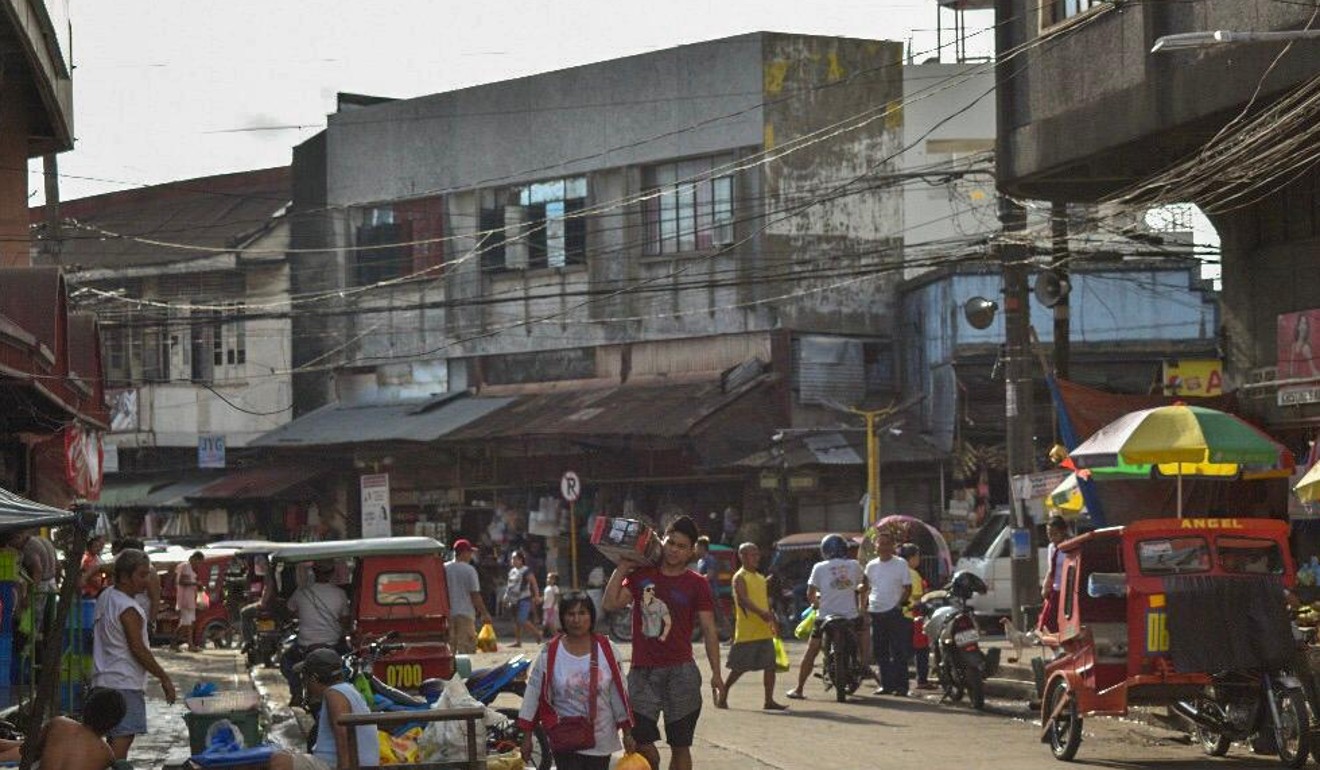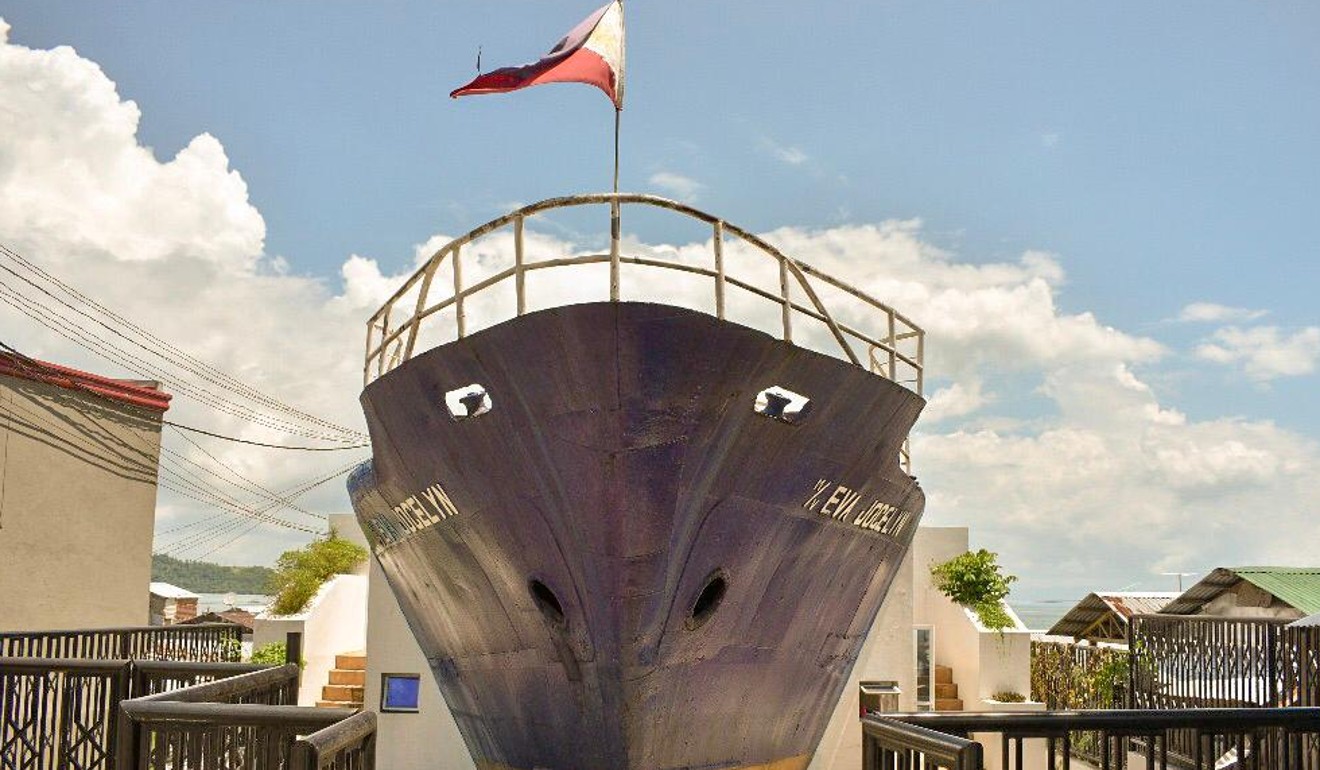
Six years since Typhoon Haiyan, why are thousands of Filipinos still waiting for help?
- Visayan city resident and mother of six Richelle Alvaraz, whose home was destroyed in the storm, still lives in a makeshift hut
- She is among 6,000 people in Tacloban who are still waiting to be moved to permanent housing, despite constant government promises
For 30-year-old Richelle Alvaraz, a mother of six and a resident of the Visayan city of Tacloban – the most severely affected location in the republic – the typhoon (dubbed Yolanda in the Philippines) with its 380km/h winds and unprecedented storm surges will never be forgotten. Literally: because despite countless government promises over the past five years, Alvaraz is still waiting – along with thousands of others – to be relocated to permanent housing.

Sitting in the makeshift hut she calls “home”, the sad-eyed single mother (her husband is in jail for what she alleges is a trumped-up drug charge) can still recall the eerie silence in the hours just before the storm hit the city of 240,000 some 880km to the southeast of Manila.
“We knew it was coming. The government had warned us. But there wasn’t a sound at 3am. By 5am, however, everything had changed.”
“I was running towards higher ground with my children. I even had to swim as the water caught up with me. I told my children not to look back. The sounds of the waves and the howling wind were unmistakable. I couldn’t make out what was going on around me – only my neighbours’ screams. Some of them helped me get my children to safety, thank God.”

While Tacloban City Mayor Cristina Romuáldez (a relative of former first lady and Tacloban native, Imelda Marcos) recently declared that its people “have moved on and forward”, for people like Alvaraz, the disaster is ongoing, as neglect and disinterest supplant raging winds and driving rain.
There have been initiatives. Back in 2015 and soon after the tragedy, then president Benigno Aquino III outlined the Yolanda Comprehensive Rehabilitation and Recovery Plan, which included 205,000 houses for the displaced.
Boracay’s back: A lesson from the Philippies in coping with Chinese tourism
Underlining his resolve, he also gave an ultimatum to government agencies, including the National Housing Authority (NHA) that all rehabilitation efforts needed to be completed by the end of 2017. Unfortunately, the results have been disappointing. The NHA recently confirmed that only 100,709 homes had been completed.

Alvaraz is one of the 6,000 displaced victims (there were 14,500 in total) in Tacloban who are still waiting to be moved to permanent housing. She is stuck for now – living in Tacloban’s Anibong district with her family, just a stone’s throw from a 3,000 ton cargo vessel, the MV Eva Jocelyn, that was swept ashore by the force of the storm, killing 11 and destroying 14 houses in the process.
Little more than a hut, her home is stiflingly hot in the midday sun and precarious in the rain. It consists of a single common area with a sturdy wooden board for a bed, along with a separate kitchen. The structure is less than 4m long and 3m wide, with corrugated tin serving as a roof. The landlocked cargo vessel stands as a sentinel in front of her ramshackle home: a memorial park open to the public.

But Tacloban is a city of contrasts. Just 10 minutes away from Alvaraz’s hovel, there is a lavish Marcos-era structure – the two-storey Santo Niño Shrine – a chapel-cum-presidential rest house with an opulent ballroom, flamboyant murals and lavish gilt furniture. Unsurprisingly, it survived Haiyan.
Having applied in January 2014 for relocation, Alvaraz continues to wait for approval, sharing the plastic-lined accommodation with her sister and six children.
Indeed, many of the houses that are “ready” lack water and electricity, rendering them unfit for occupancy. Even the NHA has admitted that they are “substandard”.
A few things missing in flood-hit Manila. President Duterte is one of them
Alvaraz admits that she is still struggling to survive, especially since she has been left in sole charge of the family. She said: “I used to earn 120 pesos (US$3) a day at a grocery store, but it was destroyed by the storm. The government only gave us a one-time supply of three kilograms of rice and six canned goods after the typhoon, but other than that we’ve yet to receive anything else.”
Still, there are promises. Recently, presidential spokesperson Salvador Panelo declared that all resettlement efforts will be completed within a year or two. But it seems that – once more – only time will tell.
“I just want to move somewhere better, we can’t keep living like this. That’s my plan, for my children’s sake,” said Alvaraz.

